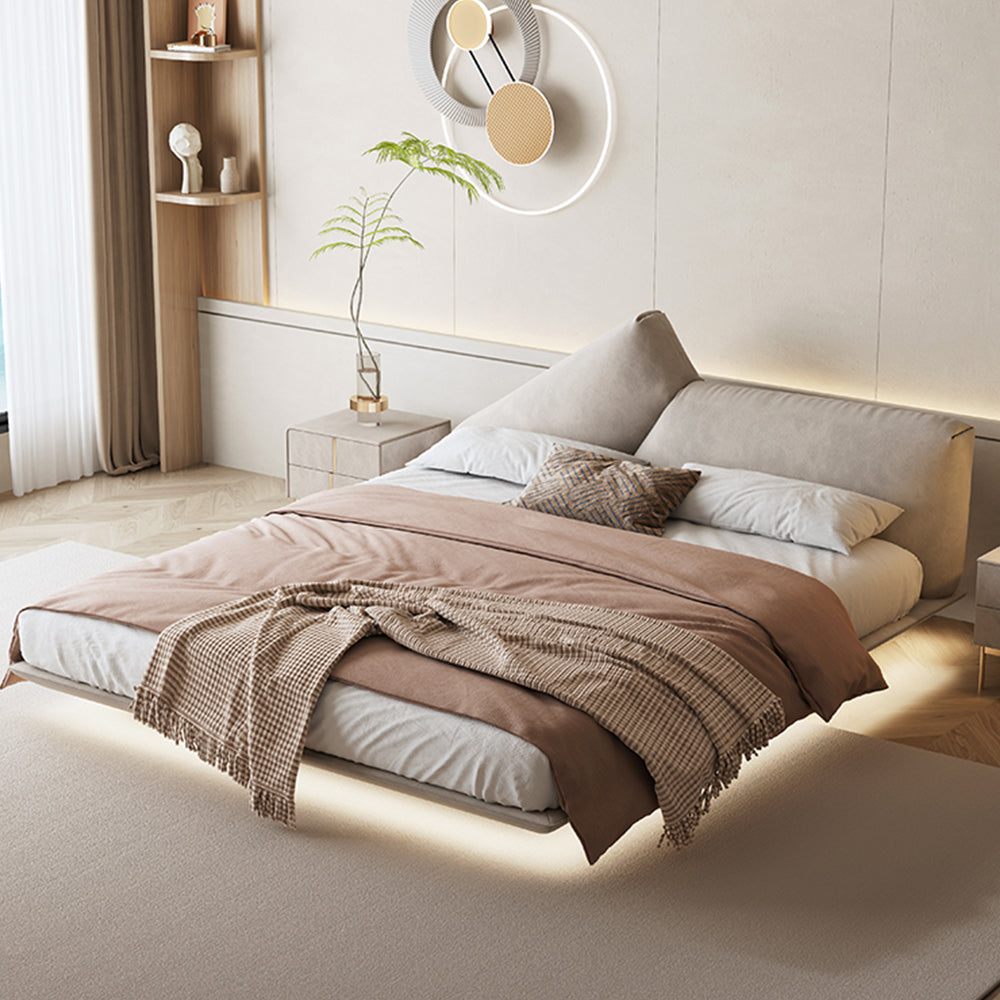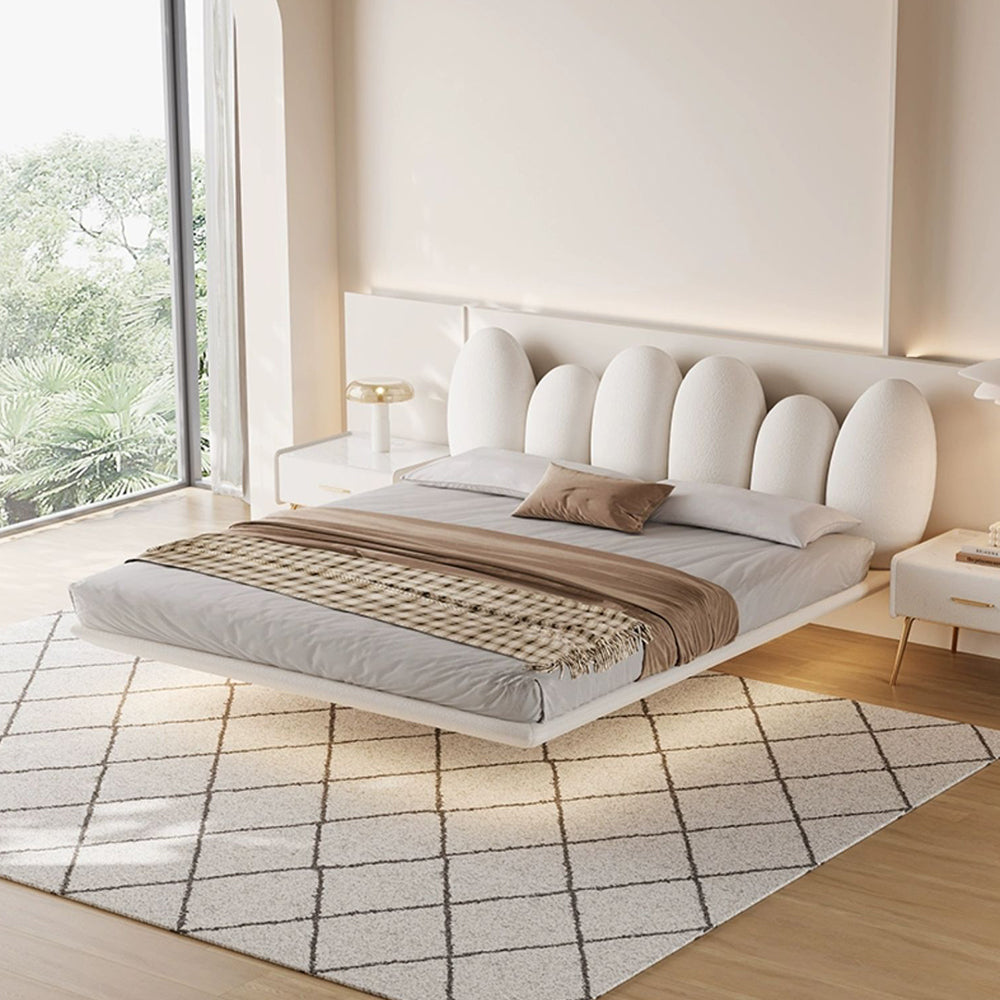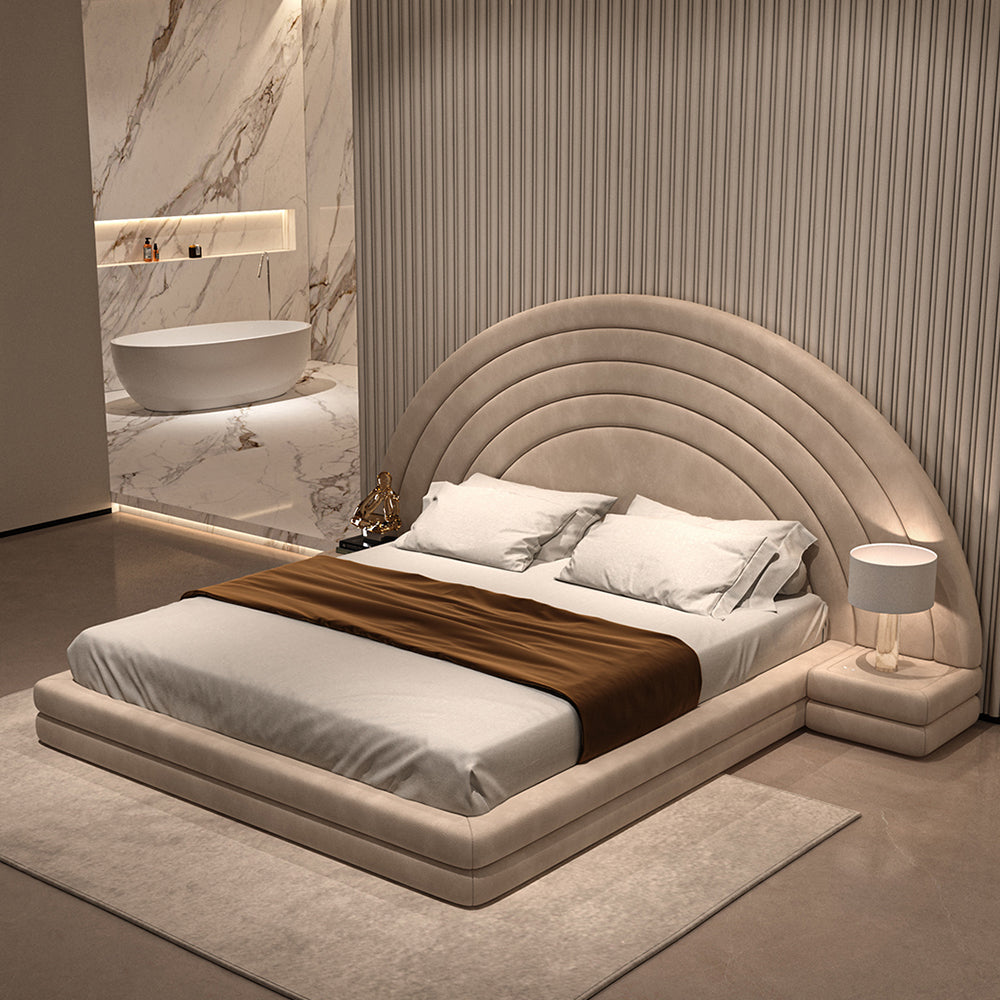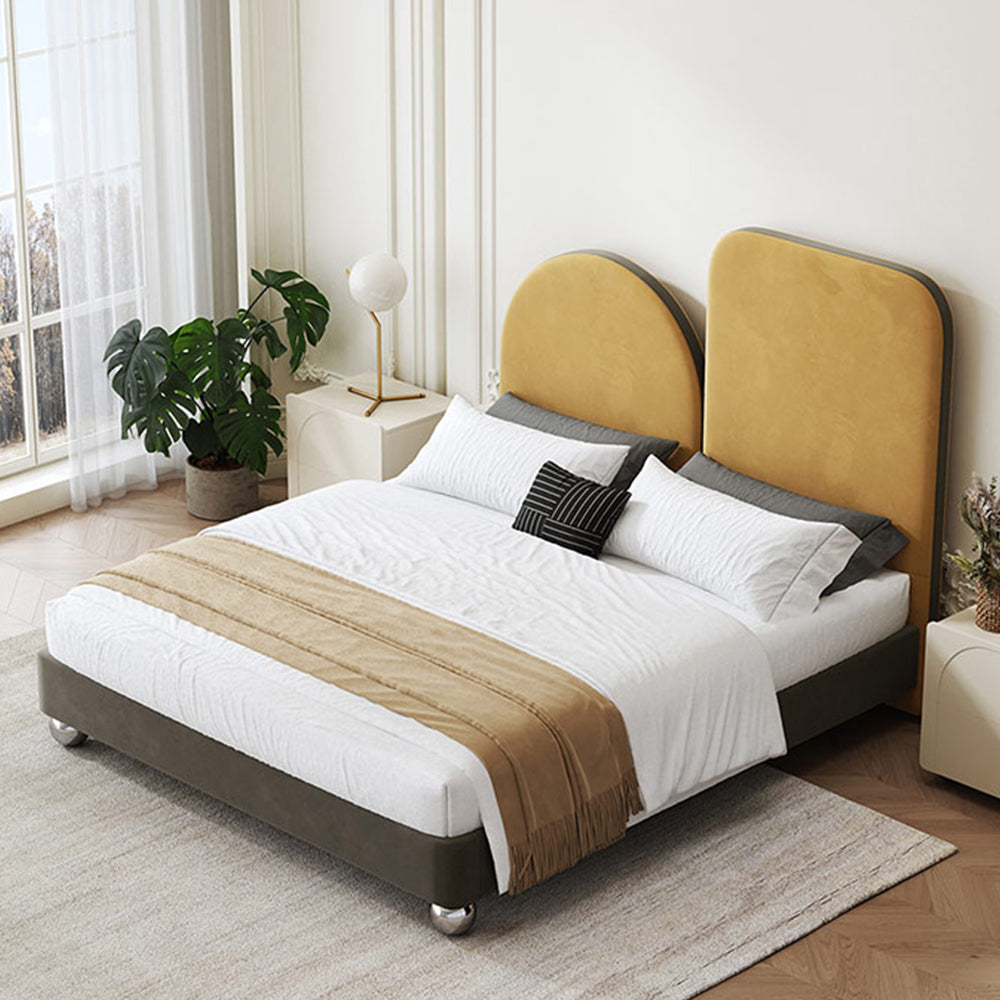Care Instructions
General
The location of your furniture can affect its longevity. Placing furniture where it can touch external walls can create moisture build-up, and placing it too close to radiators, heaters and gas or wood fires can increase the risk of scorching damage or discolouration.
Sharp objects such as buckles, rings and even the claws of your pets can tear, scratch or break the furniture. Protect from direct sunlight and rotate reversible cushions at regular intervals. Vacuum cushions weekly on low suction and take care with surfaces.
Leather
Most leathers generally do not need much day-to-day maintenance – periodic dusting with a soft, dry cloth should be enough.
It is important to avoid placing leather sofas near heat sources or direct light.
Oily stains are the biggest danger to leather surfaces. In the event of stains from oils, fats, makeup, chocolate or beverages, remove any excess liquid by dabbing with an absorbent paper towel. Gently wipe the stain from the outside edges towards the centre with a clean cloth dampened with water and neutral soap. Dry the stain, gently wiping with a dry cloth. When cleaning oily stains do not press hard, as this can cause the substance to enter the pores of the leather.
Natural leathers are so called because of their natural and uncoated nature. In this regard, natural leathers may incur marks or discrepancy of colour where it has come into contact with belt buckles or studding for example. This is a standard occurrence and forms part of the leather's character and uniqueness.
ANILINE LEATHER
Aniline leather is often thicker and softer than coated leathers. It has natural characteristics such as scoring and vein lines, which are enhanced by wear, resulting in the leather changing appearance over time. Nubuck and Suede Nubuck leathers have then been further processed to raise fibres on the grain side of the hide to give it a suede effect. Suede is the natural underside of the hide with raised fibres that give it a softer feeling. It is susceptible to oily stains as it cannot be protected. This product is not recommended for placement in high-use areas.
SEMI-ANILINE
The leather has a light colour and finishes applied to the surface which reveals the natural characteristics of the hide to a lesser extent and increases the resistance to wear. This process balances out dye colour irregularities and allows a greater colour range.
PIGMENTED
The surface of this leather has a pigment applied and a heavier protective coating, giving a limitless colour range and excellent wear characteristics. Pigmented leathers are produced in two basic forms: full grain, which shows natural grain variation and all marks, and corrected grain, which has undergone a process where some of the grain layer and most of the natural hide marks are removed. The surface then has a print embossed on it giving a more uniform appearance.
WAX EFFECT
There are many variations of this leather. It is generally aniline dyed leather that has been given a wax or oily impregnation. This gives the leather a nice feel and affords light protection. The application of the wax or oil gives a depth of colour which cannot be duplicated by surface colour and will age beautifully over-time. These leathers are affected by sunlight and heat. They generally scratch relatively easily, but in many cases, scratches can be lightened by rubbing.
Stone
MARBLE, TRAVERTINE, GRANITE, LIMESTONE, CEMENT
Stone is very delicate and must be cleaned with pH neutral, gentle cleaners. Acids, even the mild acid in vinegar, will dissolve the finish and permanently etch the surface. Stone is very porous and therefore it likes to soak in liquid spills. If liquid spills do occur, wipe it dry as soon as possible by blotting dry with a clean cloth. The best method for cleaning stone is to wet a clean cloth with lukewarm water to wipe the surface, and to remove any marks. You can use a very mild detergent to remove any tricky stains, but this should not occur more than once every few months.
Do not place glasses on it directly and always use a dry cloth to dry and shine the stone to prevent liquids from getting into the stone core.
Timber
Although our timber collections often have lacquered surfaces and can mostly tolerate the heat from coffee cups and dinner plates, they cannot tolerate greater temperatures from dishes heated on the stove-top or in conventional or microwave ovens. The general rule is: if something is too hot to hold, it is too hot to place on timber. These hotter containers can mark the timber.
The lacquer is also water-resistant, however cannot tolerate excessive quantities of liquid. Dry any spills immediately and polish the surface, otherwise liquid may seep through the lacquer and cause irreparable damage. Timber can develop a cloudy appearance caused by condensation when hot items are placed on its surface. This cloudy appearance cannot be removed unless the whole piece is resurfaced.
Other spills, such as glue or correction fluid, should be removed with a damp cloth (soapy if necessary) then dried and re-polished until the gloss returns.
Do not allow hot cooking utensils, methylated spirits, pens, textas, nail varnish and other similar substances to come into contact with your timber furniture. Your solid timber furniture is a natural product and may expand and contract due to varying temperature conditions, occasionally producing small cracks within or between the timbers. This is normal and often part of a piece’s character. To minimise movement the furniture should not be placed outside, in direct sunlight, or in heavily air-conditioned areas.
Solid timber needs to be polished regularly to maintain optimum condition – polishing cleans and nourishes the wood, protects it and highlights its character. When polishing, work along the grain of the timber, rub in the polish well and buff immediately, making sure you polish out all scratches.
TASMANIAN OAK/VICTORIAN ASH (HARDWOOD)
Tasmanian Oak and Victorian Ash are collective names for timber of the species Eucalyptus Delegatensis, Regnans and Obliqua (members of the group of Eucalypts known as the ‘Ash group’). The Ash group grows in all areas of Tasmania, except the west coast, and in parts of Victoria and southern NSW and ACT. This timber is readily worked to a smooth, flat, resilient surface. It can be stained to almost any shade and is regarded as one of the best and most versatile finishing timbers available.
ELM (HARDWOOD)
Various species of the genus Ulmus occur in Europe, Western Asia, North America and Japan. The Hardwood is a dull brown colour which is clearly defined, when green, from the lighter coloured sapwood. The irregular growth rings, together with the cross-grained character of the wood, give it an attractive appearance.
OAK – EUROPEAN AND AMERICAN (HARDWOOD)
The genus Quercus with more than two hundred separate species produces the true oaks. Most are found in the northern hemisphere where, in temperate regions, they may form pure strands or be a dominant species in mixed woodlands. In warmer countries, they tend to occupy the mountain areas. Oaks fall into three groups: red, white, and evergreen or live oaks. Varying in colour from a light yellow to a dark red, this very strong timber has been used for hundreds of years in furniture making and can be stained to almost any shade.
ASH – EUROPEAN AND AMERICAN (HARDWOOD)
Ash can be any of four different tree genera from four very distinct families but originally, and most commonly, refers to trees of the genus Fraxinus (from Latin ‘ash tree’) in the olive family Oleaceae. The ashes are usually medium to large trees and mostly deciduous, though a few subtropical species are evergreen. The wood is hard, elastic and very strong, and is generally used for pieces demanding strength and resilience.
Painted and Timber Finishes
Always avoid cleaning painted timber with liquids and harsh chemicals. To clean your painted timber surface, use a dust cloth or feather duster to remove dust and debris. Removing dust is essential as dust collection absorbs and holds moisture on humid days and damp evenings, causing the timber to expand/crack. You may use a slightly damp cloth or a mild detergent in lukewarm water to remove liquids that might stain, however, be sure that the cloth is not soaked excessively and the surface is dried with a clean dry cloth immediately after wetting.
Fabric
Fabric Colour Fastness No fabric, even those tested to industry requirements, is 100 percent colour-fast and it is impossible to prevent fading if the right precautions are not taken. Winter sun sitting low in the sky can have the largest impact, particularly when curtains are pulled back. However, any room with a lot of daylight can cause susceptible fabrics to fade.
Fading and Sun Damage Dyed fabrics, particularly those dyed in bright colours, are susceptible to fading. North facing rooms are exposed to the most sunlight. Constant exposure to the direct rays of the sun can break down the fabric fibres, causing them to become brittle and increasing the risk of a rip or tear during cleaning.
Oxidation Fumes from fires of all kinds, car exhausts and kitchen stoves produce a sulphur compound which, when combined with humidity and oxygen, produces a mild sulphuric acid. This can cling to the fabric and contribute to deterioration and discolouration. Regular professional cleaning can help minimise the impact of this.
Yellowing Tobacco smoke will cause a yellow or brown stain on most fabrics and is a particular problem on light coloured materials. Pilling This is often a result of wear and tear, but climatic conditions and air quality can also contribute. Fibres in some clothing can transfer pills to the furniture. Pilling is not a defect and can easily be removed using a battery operated pilling appliance available from most haberdashery stores.
Shrinkage Sufficient allowance should be made for shrinkage as all fabrics are prone to it. An allowance of three percent is an acceptable industry standard. Spills and Stains Attend to stains and spills as quickly as possible after the incident. Mop up any spilled liquid and scrape away any dirt, then clean as recommended for the type of stain. Be careful about over saturating fabrics, especially with detergent, as this can create watermarking or other stains. There’s also a big difference in the approach for oil and non-oil based stains.
Oil Based Use warm water mixed with household soap (test first on a hidden part of the fabric). Rub gently and blot dry with a clean towel. Then use clean, cold water (rain or distilled water is best) and go through the blot drying process again. To finish use a hair dryer held at least 30cm from the surface, working outwards from the centre of the stain. Clean entire panels of fabric rather than specific spots as this will prevent the spot from standing out when the cleaning is done.
Non-Oil Use the same method as for oil but use a dry-cleaning solvent in place of the soap and water solution. The solvent is available from supermarkets and chemists.
Specific Stains Test cleaning products on a hidden part of the fabric and check care labels for specific instructions.
Alcohol Mop up excess liquid, dab at the stain with rubbing alcohol on a clean cloth, then blot repeatedly with a solution of cool water and detergent. Repeat and blot dry with a clean towel.
Blood Ammonia is the best solution for blood. Mix a solution with one teaspoon of ammonia in a cup of cold water and dab at the spot. Do not over rub. Blot with a clean towel and repeat the process. Once the spot is gone, continue to dab the stain area with water and blot. Repeat after fifteen minutes, this time with white distilled vinegar. Blot once again, using a dry towel.
Chewing Gum Rub an ice cube over the gum to harden it, then carefully scrape it up with a blunt knife. This should remove most of the gum. The remainder should clean up with dry cleaning fluid.
Coffee and Tea Sponge the stain with warm water then apply warm glycerin. Leave it for thirty minutes and blot with warm water, drying quickly.
Cosmetics Sponge with warm water then apply warm glycerin. Wait thirty minutes then blot with warm water, drying quickly.
Fruit/Fruit Juices Blot or wipe up as much as possible, leaving the stained area dry. Blot with cold water. If any trace remains, dab the spot with a mixture of liquid detergent, vinegar and water. Once the stain is removed blot with water to remove the vinegar and detergent traces.
Grease Dry cleaning fluid is the best solution for grease, including hair grease. If any trace of stain remains after dabbing with the fluid, go over it with a mixture of detergent and warm water then finish with a clean slightly damp cloth.
Ink Add some warm glycerine, then leave for at least ten minutes. Apply some liquid detergent and rub gently. Finally, use clean water and blot dry quickly.
Milk Blot with a clean soft cloth, then use clean water on the area. Blot with a solution of water, detergent with a small amount of ammonia. Wait until dry, and then go over the area with some dry-cleaning fluid. To finish, blot lightly with a cloth that has been wet with some rubbing alcohol.
Ice Cream Wipe or scrape away the excess and blot with clean water mixed with liquid detergent. Make sure you do not saturate the cloth. Once dry, use dry-cleaning fluid for any remaining stain.
Soft Drinks and Confectionery First sponge the stain with water, and then add some warm glycerin. Finish by blotting with water. Iodine Cut a lemon and apply to the area then sponge with warm water. Apply a small amount of detergent with a cloth then blot with a cloth wrung out in a solution of two thirds warm water and one third white vinegar.
Shoe Polish Apply liquid paraffin to loosen the stain then sponge with dry cleaning fluid.
Urine It is vital to get to urine stains before they dry, as urine can affect the dye and discolour it. Use a solution of water with white vinegar then blot dry. Then use another solution of liquid detergent with cold water. Finally dab the spot with cold water, making sure you blot it thoroughly.
Vomit Same technique as for milk.
Water Spots Blot the area with a cloth and then apply some white vinegar. After a few minutes wet the area with cold water, blotting with a dry cloth. Always brush in the same direction of the pile when dry.
Stainless Steel
The name originates from the fact that stainless steel does not stain, corrode or rust as easily as ordinary steel. However, while stainless steel does ‘stain less’; it is not actually stain or rust proof. There are over 150 grades of stainless steel. The most commonly used in the furniture industry are:
GRADE304
This is the standard ‘18/8’ stainless steel. It is the most versatile and most widely used stainless steel, available in a wider range of products, forms and finishes than any other.
GRADE 316
This is also called ‘marine grade’ stainless steel and is the grade, used in the furniture industry that is the least susceptible to corrosion. In extreme coastal locations or if the Steel is regularly subjected to water, brown discolouration, or tea staining, can appear on the surface of products. Tea staining does not affect the structural integrity or the longevity of the products and can be controlled. Tea staining can generally be removed with mild abrasive cleaner and warm soapy water. Any minor scratches can generally be removed by rubbing with a Scotch Brite pad in the direction of the grain.




